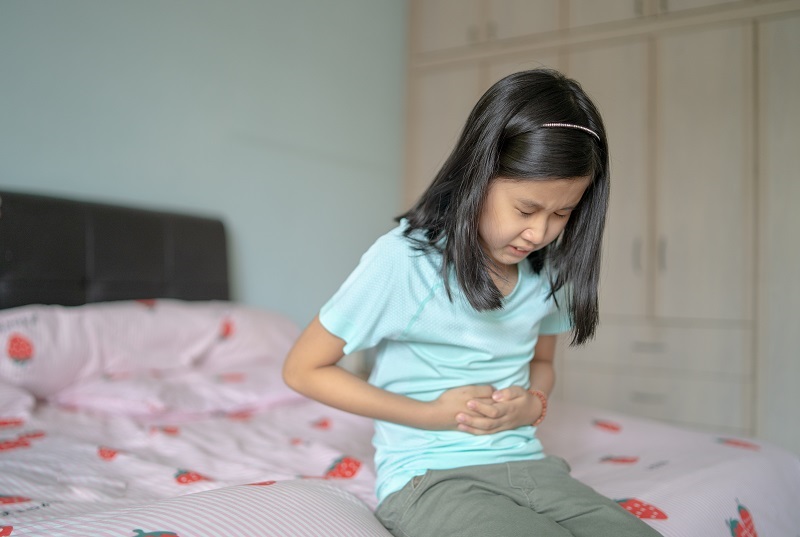4 of the Most Common “Tummy Troubles” Kids Have

July 20, 2020
Clinical Contributors to this story:
Brittany Parlow, M.D.
Victoriya Staab, M.D.
If you’re a parent of young kids, bellyaches and gassiness are a regular part of life. “Gastrointestinal issues are incredibly common in kids,” says Brittany Parlow, M.D., a pediatric gastroenterologist at K. Hovnanian Children’s Hospital at Jersey Shore University Medical Center. “The good thing is, the majority of issues can often be managed with changes in diet or changes in lifestyle.”
What Are Some of the Most Common GI Issues?
- Constipation: When children experience constipation, it’s usually because they aren’t getting enough fluid and/or fiber in their diet, says Dr. Parlow. Particularly with younger children, they may have had a painful bowel movement and are afraid to have another one, so they “hold it.” That makes their stool harder and more painful to move. It is not unusual for children to get constipated when they start school, because they may feel uncomfortable about using the bathroom in school, so they hold their stool in.
“It becomes a cycle, so we have to work with parents and kids to break that cycle. We help make the stool a lot softer and help them get over the anxiety about going to the bathroom,” Dr. Parlow says. Treatment may include changes to diet, increasing the water intake, temporary use of medication and techniques to manage anxiety.
- Abdominal pain: A lot of different things can cause bellyaches or pain. “Most belly pain in kids is easily treated,” Dr. Parlow says. More serious causes usually have red flags such as losing weight, vomiting, blood in the stool or abdominal pain that keeps a child from sleeping or wakes them. Frequent causes of belly pain are gas and acid reflux, which are often related to diet. In such cases, blood and stool testing may be done to get a fuller picture of what’s going on, and there may be a period of eliminating certain items from the diet to check for food intolerance.
- Appendicitis: Inflammation of the appendix—a small pouch attached to the large intestine on the right side of the body—may start as vague abdominal pain around the belly button, then consolidate into severe cramping pain in the lower right side of the belly, says Victoriya Staab, M.D., pediatric surgeon at the Children’s Hospital.
Some children may also experience nausea, vomiting, fever and diarrhea. A burst appendix can lead to serious complications, but if attended to early, appendicitis is typically resolved with minimally invasive surgery. Sometimes antibiotics may be used instead, Dr. Staab says.
- Intussusception: Another intestinal condition that requires urgent attention is intussusception, when part of the intestine folds on itself, causing a blockage. It is most often seen in children under 2 years old and sometimes happens after a virus causes lymph node swelling in the intestines or if there’s a structural abnormality, such as a polyp.
Children with intussusception develop waves of sudden intense pain that may cause them to double over or pull their knees to their chest and cry inconsolably, Dr. Staab says. Children with these symptoms should go to the emergency room. Usually, the folded intestine can be reopened with an enema that uses fluid or air. In cases where there is more extensive damage to the intestine, or the enema is unable to reopen the blockage, surgery is required.
Next Steps & Resources:
- Meet our sources: Brittany Parlow, M.D., and Victoriya Staab, M.D.
- To make an appointment with a pediatric GI specialist near you, call 800-822-8905 or visit our website.
The material provided through HealthU is intended to be used as general information only and should not replace the advice of your physician. Always consult your physician for individual care.
Find a doctor near me
Learn more about our 9,500 providers. You can call, book online or schedule 24/7 video visits for Primary and Urgent Care.






